





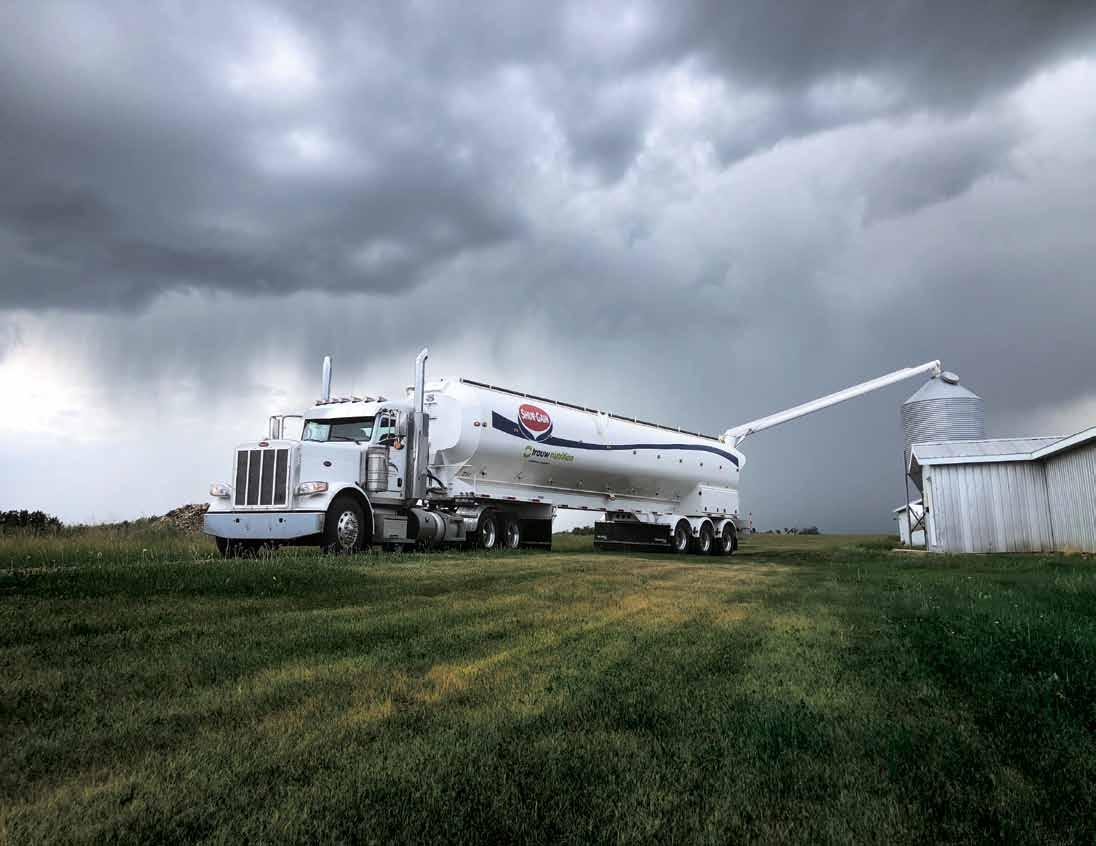


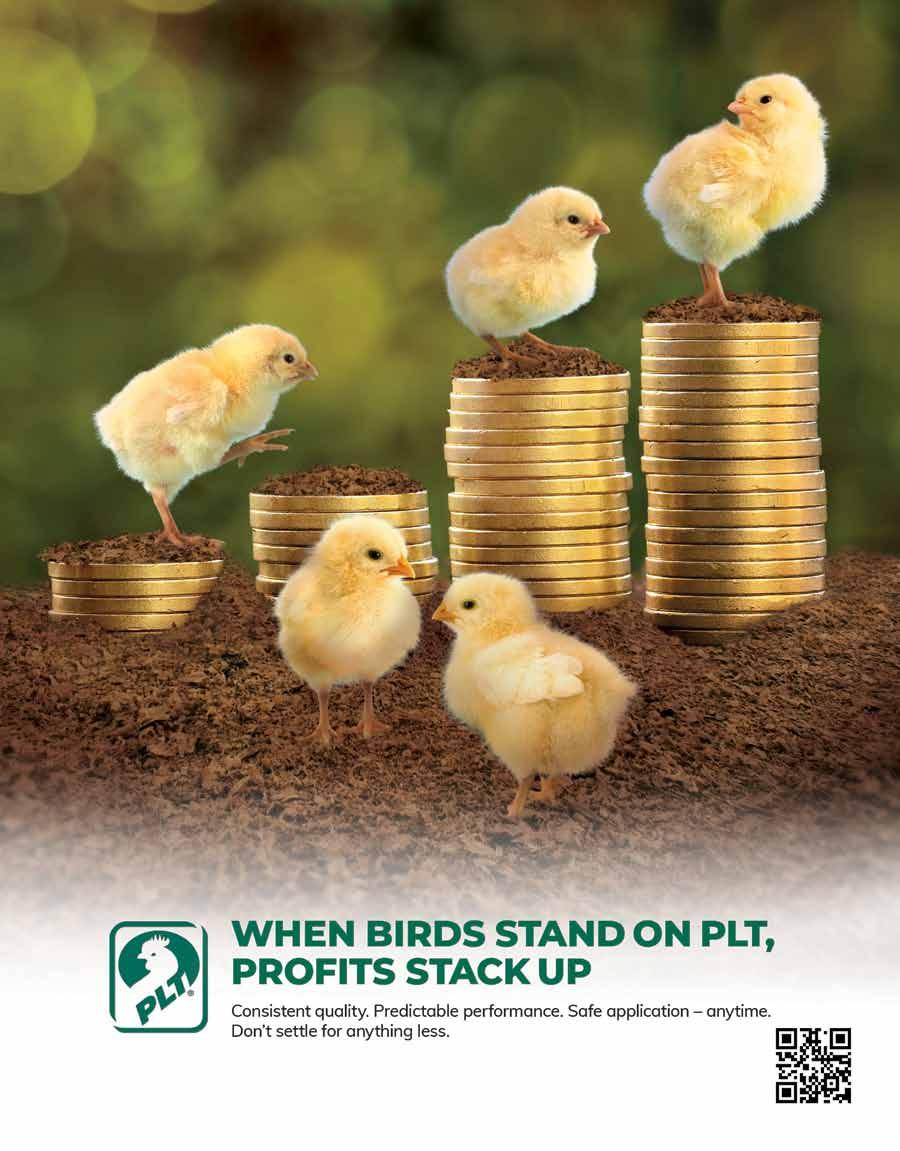
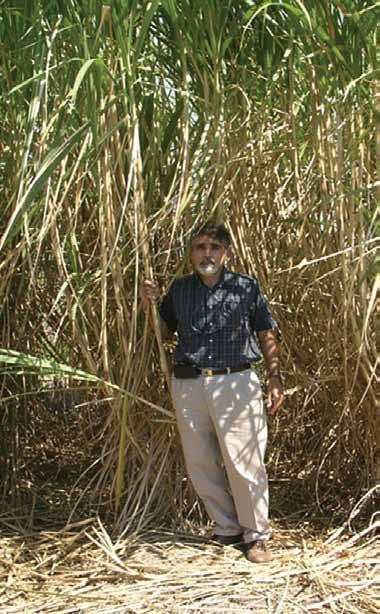
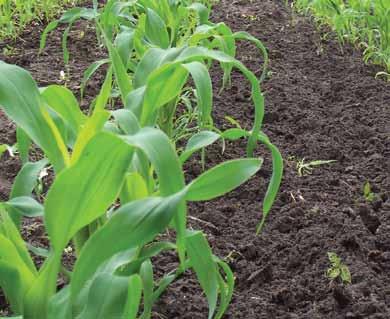















Eagan mfg., 24
870-878-6805; www.eaganmfg.com
FPm inc., 15
402-729-2264; www.fpmne.com
Gas-Fired Products, 22 800-849-7311; www.spaceray.com
Hog Slat, 31 800-949-4647; www.hogslat.com
Jones-Hamilton Co., 4 888-858-4425; https://joneshamiltonag.com
l.B. White, 13 608-783-5691; www.lbwhite.com
national incinerator, 19 205-589-6720; www.nationalincinerator.com neogen, 32 800-234-5333; www.neogen.com
overdrive lighting, 21 800-657-0509; www.aglights.com
Precision lighting, 1, 2, 14, 20 800-737-1837; www.poultrylighting.com
S&i Pump Crete, 23 215-687-1342; http://sipumpcretellc.com
Star labs, 19 800-894-5396; www.primalac.com
The Egg Carton Store, 28 866-333-1132; www.eggcartonstore.com
United Country real Estate, 16 800-999-1020; https://farms.unitedcountry.com
Walinga USa, 3, 18 800-466-1197; www.walinga.com
Weightech, 23, 25 800-457-3720; www.weightechinc.com

Calif. Contact: north american m eat i nstitute, 1150 Connecticut ave. nW, Washington, D.C. 20036; Ph: 202-587-4200; www.meatinstitute.org.
General
Editor David B. Strickland 770-718-3442 dstrickland@poultrytimes.com
Digital manager rachel Danford 770-718-3438 rdanford@poultrytimes.com
Senior Sales Executive Stacy louis 770-718-3445 slouis@poultrytimes.com
Sales Support Janice Sisk
770-536-2476 jsisk@poultrytimes.com
SEP 25-27 — 58TH naT ional m EET in G on
P o U lT r Y HE alTH, P ro CESS in G and liv E P ro DUCT ion , o cean City. m d. Contact: Delmarva Chicken a ssociation, 16686 County Seat Hwy. Georgetown, Del. 19947; Ph: 302-856-9037; www.dcachicken.com.
SEP 26-28 — SHE ll EGG a C a DE m Y, Purdue University, West l afayette, i nd. Contact: Empowered Events, P. o . Box 265, Buffalo, m inn. 55313; Ph: 765-494-4845; info@shelleggacademy.org; https://shelleggacademy.org/.
SEP 28-29 — E nvironm E n Tal mana GE m E n T SE minar , Hilton Sandestin Beach Golf r esort & Spa, Destin, Fla. Contact: USP o U lT r Y, 1530 Cooledge r oad, Tucker, Ga. 30084; Ph: 770-4939401; seminar@uspoultry.org; www.uspoultry.org.
oCT 2 — nCC annUal ConFErEnCE, Washington, D.C. Contact: national Chicken Council, 1152 15th Street nW, Suite 430, Washington, D.C. 20005; Ph: 202-296-2622; pburko@chickenusa.org; www.nationalchickencouncil.org.
oCT 3 — aFia/KSU-500, Fundamentals of Feed m anufacturing. o nline course runs through nov. 7, 2023. Contact: american Feed industry association, 2101 Wilson Blvd., Suite 810, arlington, va. 22201. Ph: 703-524-0810; www.afia.org.
oCT 4-5 — PoUlTrY ProTEin & FaT SEminar, DoubleTree by Hilton n ashville Downtown, n ashville, Tenn. Contact: USP o U lT rY, 1530 Cooledge road, Tucker, Ga. 30084; Ph: 770-4939401; seminar@uspoultry.org; www.uspoultry.org.
oCT 5-6 — ProTEin PaCT 2023 SUmmiT, San Diego,
oCT 7-11 — an UG a 2023, Cologne, Germany. Contact: www.anuga.com.
oCT 9-11 — P o U lT r Y SY m P o S i U m , r ogers Convention Center, rogers, ark. Contact: The Poultry Federation, 321 South victory Street, little rock, ark. 72201; Ph: 501-375-8131; info@thepoultryfederation.com; www.thepoultryfederation.com.
oCT 16-18 — G lo B al ETH anol SU mmi T, Washington, D.C. Contact: U.S. Grains Council, 20 F Street nW, Suite 900, Washington, D.C. 20001; Ph: 202-789-0789; https://grains.org.
oCT 23-25 — ProCESS EXPo, mcCormick Place, Chicago, ill. Contact: messe Frankfurt, www.myprocessexpo.com.
nov 1-4 — 96th naT ional FFa Conv E n T ion & EXPo, i ndianapolis, i nd. Contact: national FFa organization, 6060 FFa Drive, i ndianapolis, i nd. 46278; Ph: 888-332-2668; www.ffa.org.
nov 8-10 — 2023 EQU i Pm E n T man UFaCTU r E r S Con FE r E n CE, o mni Tucson n ational r esort, Tucson, ariz. Contact: american Feed industry association, 2101 Wilson Blvd., Suite 810, arlington, va. 22201. Ph: 703-524-0810; www.afia.org.
DEC 5-7 — ioWa TUrKEY FEDEraTion WinTEr Conv E n T ion , West Des m oines m arriott, W. Des m oines, iowa. Contact: iowa Turkey Federation, 535 East lincoln Way, ames, iowa 50010; Ph: 515-232-7492; https://iowaturkey.org.
Content Writer Elizabeth Bobenhausen
770-209-3335
ebobenhausen@poultrytimes.com
Circulation Kim Ewing 770-535-6395
kimewing@poultrytimes.com
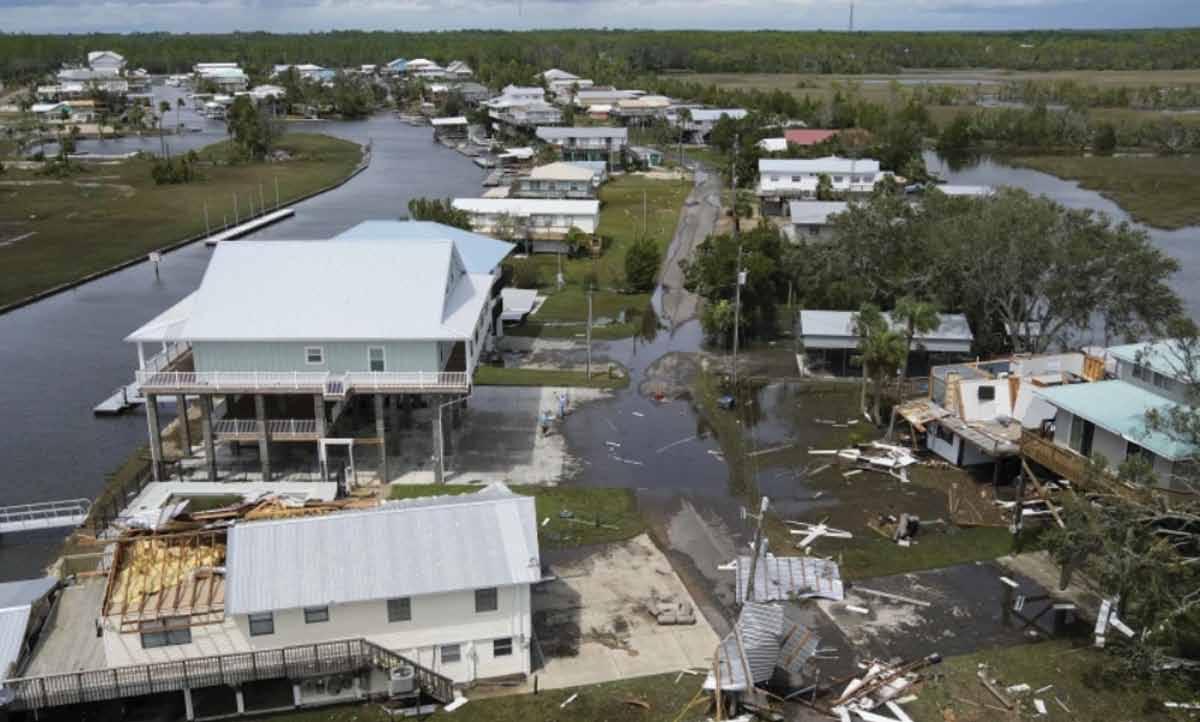 By elizabeth Bobenhausen poultry times staff ebobenhausen@poultrytimes.com
By elizabeth Bobenhausen poultry times staff ebobenhausen@poultrytimes.com
GAINESVILLE, Ga. — America is now in the midst of hurricane season. Florida was the latest victim of a hurricane, when Hurricane Idalia made landfall near Keaton Beach, Fla., at 7:45 a.m. on Aug. 30, as a category 3 storm in what is known as the “Big Bend” area of the state on the Gulf of Mexico coast.
The National Hurricane Center defines a hurricane or a typhoon as “a tropical cyclone in which the maximum sustained surface wind (using the U.S. 1-minute average) is 64 kt (74 mph or 119 km/hr.) or more.
It was reported that Florida Gov. Ron DeSantis declared a state of emergency in 46 of the state’s 67 counties.
“The property, we can rebuild someone’s home. You can’t unring
the bell, though, if somebody stays in harm’s way and does battle with Mother Nature. This is not something that you want to do battle with,” DeSantis said.
Before the storm made landfall, parts of Florida had already had 11 tornado warnings. The day the hurricane was due to strike, DeSantis held a press conference at 6:30 a.m.
EST. Around 6:36 a.m., during the governor’s press conference, the lights in the building were going on and off. This was an indication that the power was starting to shut off due to the high winds.
The National Weather Service announced that the winds were going 125 mph and onshore and gusts were going 85 mph. As the storm made landfall the storm surge was at three feet. It was predicted that the storm surge would increase to 16 feet. Two people were dead as a result of a vehicle crash when driving conditions were rigid.
A press statement released on Aug. 28 DeSantis’s office, discussed preparations for the storm. It noted:

• The Florida National Guard was mobilizing 1,100 personnel to respond and provide immediate support to impacted areas in addition to 2,400 high wheel vehicles
(Continued on page 27)
GAINESVILLE, Ga. — The North Carolina Wildlife Resources Commission says that when the first settlers landed in North Carolina, turkeys could be found everywhere within the state. Although, by the 1700s only a small number of turkeys persisted. The decrease in turkey populations was attributed to unchecked hunting, deforestation, and the obliteration of their habitats. This continued into the 1960s.
The turkey population in North Carolina has returned because of the efforts of a restoration program put in place by the North Carolina Wildlife Resources Commission. The program is comprised of live-trapping and moving turkeys to places and states from which they had previously vanished. A new study by North Carolina State University suggests that climate change might not affect the timing of turkey nesting.
The study, “Timing of Turkey Nesting May not Shift with Changing Climate,” says “the findings suggest eastern wild turkeys (Meleagris gallopavo silvestris) could be vulnerable to shifts in climate, which could threaten the availability of their food sources, the amount of vegetation cover available to protect them from predators, and other factors.”
Chris Moorman, professor in NCSU’s Fisheries, Wildlife and Conservation Biology Program said “there are implications here for turkey populations if individuals are inflexible in their ability to shift their reproductive activities, as resources are certainly going to change in the future. This could result in ‘phenological mismatch,’ where the timing of an animal’s natural history doesn’t match up with the food and cover resources that are critical for successful reproduction and survival.”
The study’s lead author Wesley Boone, and a postdoctoral research scholar at NCSU, said, “Turkeys are a highly adaptable species; this adaptability facilitated their ability to be restored. We want to know if they’re going to be able to persist in a future with a changing climate, and changing landscapes, too.”
In an effort to find out how climate change can affect turkey nesting, for eight years, researchers tracked when eastern turkeys in five states of the southeast United States began

to nest.
Using the proper safety procedures, researchers used nets to catch female turkeys. The academics attached GPS receivers to the birds and watched their location. While they watched the birds’ movements, the researchers looked for any patterns that might signal that the turkeys had started the incubation of their nests. Incubation means when a female turkey lays on her eggs in her nest. Once that was completed, they checked the nests to see if any
eggs had hatched.
The researchers used past weather data from 2014 to 2021 to determine of temperature, rainfall, and the timing of the “spring green-up” matched with the timing of the turkeys’ nest incubation period. They also forecasted if the turkeys’ nest incubation period would be affected by two climate change conditions by 2041 to 2060. They tested a total of 717 nests and 183 nests had at least one egg hatched within the nest. The academics determined that temperature and rainfall had slight effects when turkeys began their incubation nesting. Nevertheless, the changes were so minor that they can be calculated in hours, not in days.
The study concludes by saying “when they looked at the relationship between climate change-related shifts in average precipitation and temperature changes, they found the timing of successful nests would change by less than three hours. The research team did not see any links between turkey nest timing and spring green-up.”
“We did find relationships between nest timing, rainfall, and temperature, but when we projected that into the future, there is no biological relevance in the shift in timing,” Boone said. “However, the lack of change in response to a changing
climate could be a problem because the critical food and cover resources linked with spring green-up are likely to shift earlier in the future.”
“For many animals, there is variability around the timing of breeding that would allow individuals to adapt to availability of resources,” Moorman added. “We did not project drastic changes in the timing of when wild turkeys nest under climate change. Turkeys seem relatively inflexible as to when they reproduce, nesting is initiated around the same time each year with only slight shifts in the timing, regardless of weather conditions.”
The study also noted that the researchers of the project understand that there are unanswered questions in regard to the roles of weather conditions and climate change, disease outbreaks and other circumstances on turkeys.
“There could be a lot of factors interacting to cause declines, including timing of the hunting season, land-use change that impacts habitat, changes in predator populations, as well as weather, climate and diseases,” Boone added. “We need to begin chipping away at the questions to build a comprehensive understanding of the current and future threats to wild turkey population sustainability.”
“we need to begin chipping away at the questions to build a comprehensive understanding of the current and future threats to wild turkey population sustainability.”alfred viola, northeastern University, Bugwood.org
 By david B. strickland poultry times editor dstrickland@poultrytimes.com
By david B. strickland poultry times editor dstrickland@poultrytimes.com
WASHINGTON — U.S. Trade Representative Katherine Tai recently announced that India and the United States have resolved some outstanding trade disputes and tariffs on U.S. frozen whole turkeys, turkey parts and frozen duck are to be reduced.
President Joe Biden and India Prime Minister Narendra Modi met Sept. 8 in New Delhi, India, for the G20 Leader’s Summit. The two also met in June in Washington, D.C., for a state visit, during which trade tariffs were also discussed.
“Resolving this last outstanding WTO dispute represents an important milestone in the U.S.-India trade relationship, while reducing tariffs on certain U.S. products enhances crucial market access for American agricultural producers,” Tai said in a statement.
For poultry industry reaction, the National Turkey Federation and the USA Poultry & Egg Export Council released a joint statement noting that this agreement will reduce India’s basic tariff on frozen whole turkey, frozen turkey parts, and frozen duck from 30 percent to 5 percent.
“The USA Poultry & Egg Export Council applauds the decision to lower the tariff on imports of U.S. frozen turkey parts, whole turkeys and duck by India. This is significant, positive action,” Greg Tyler, USAPEEC president and CEO, said. “We very much appreciate our government’s ongoing efforts to increase access for U.S. poultry and egg products in India
“The lowering of tariffs on turkey meat and for some duck exports is a great success. We hope that in the future we are able to gain better access for chicken and to expand access for duck as well, which can help to further address the protein needs of Indian consumers.”
Joel Brandenburger, president and CEO of the National Turkey Federation added that NTF, “applauds the efforts by the U.S. and Indian governments to significantly reduce the tariffs. This move creates an important new market for U.S. turkey producers and will give Indians more affordable access to a nutritious, delicious protein.
“NTF congratulates the Office of the U.S. Trade Representative and the leadership of USDA on this accomplishment, and we thank Senators Mark R. Warner and Thom Tillis for spearheading congressional efforts to ensure U.S. turkey growers are able to effectively compete in this fast-growing marketplace.”
Senators from turkey-producing states have also expressed their gratitude for this new reduction in trade tariffs with India.
In a joint statement, U.S. Sens. Mark Warner and Tim Kaine (both D-Va.), said, “For months we’ve urged the U.S. Trade Representative to work to reduce the tariffs that make it difficult for Virginia’s producers to export poultry products to India. Today, we’re proud to report that the USTR has finally come to an agreement with India to reduce these retaliatory tariffs. This move will help strengthen the strong partnership between our two nations while generating increased demand for Virginia poultry and supporting economic activity in the Valley.”
“For too long, high tariffs have prevented American turkey farmers from exporting their products to India,” said U.S. Sen. Amy Klobuchar (D-Minn.). “I’m glad to see this agree-
ment has been reached.”
This latest reduction in trade tariffs with India also includes U.S. blueberries and cranberries, frozen, fresh, dried and processed.
“We welcome today’s news that India has agreed to reduce tariffs on its imports of U.S. turkey, duck, cranberries and blueberries, creating new market opportunities for U.S. producers and exporters in the world’s most populous nation,” U.S. Agriculture Secretary Tom Vilsack said, adding that, “… USDA and USTR have focused on rebuilding trust and strengthening relationships with our global trading partners, including India, and working through the World Trade Organization and other venues to ensure that those partners live up to their obligations so that U.S. agriculture has full and fair access to key export markets.”
Paul Bredwell is executive vice president of regulatory programs with the U.S. Poultry & Egg Association based in Tucker, Ga. He can be reached by e-mail at pbredwell@uspoultry.org

TUCKER, Ga. — While the U.S. Poultry & Egg Association is certainly known for planning and holding the world’s largest trade show associated with the animal food, meat and poultry industries, the International Production & Processing Expo, many don’t fully know the numerous services and industry support mechanisms USPOULTRY provides.
A full account of USPOULTRY’s beginnings can be found on our website at www. uspoultry.org/history. In short, the association was born in the Spring of 1947 when a group of poultry and egg dealers met in Louisville, Ky., to address common industry problems too much for one person to handle. Roughly one year later a committee met to plan the first “real” convention.
Ironically, the founding group’s reason for meeting in 1947 when it was known as the “Southeastern Poultry & Egg Association,” is as true now as it was then. Solutions to ongoing and new issues are still too complex for one person or company to handle. It is this, and USPOULTRY’s vision “To be the leading technical resource and voice for the feather industries,” that drives staff to support the industry.
Although sustainability is not a new concept, a commitment to operate sustainably is now critical for companies to communicate. While it was not until recently, relatively speaking, that induvial companies began to make specific sustainability commitments, the poultry and egg industry’s history is filled with evidence that it has become more sustainable over time.
This was demonstrated in 2014 when USPOULTRY commissioned a life cycle assessment (LCA) that evaluated the changes in the industry’s environmental performance over 45 years, from 1965 to 2010. The results from the LCA, which can be found at the following link, https://www.chickencheck.in/ wp-content/uploads/2019/07/A-retrospective-analysis-of-the-United-States-poultryindustry-1965-compared-with-2010.pdf, in-

dicated that climate change impacts decreased by 36 percent, acidification impacts decreased by 29 percent, and eutrophication impacts decreased by 25 percent per 1000 kg poultry meat produced in 2010 as compared to 1965.
Additionally, fossil energy use decreased by 39 percent, water depletion decreased by 58 percent, and agricultural land occupation decreased by 72 percent per 1000 kg of poultry meat produced despite a substantial increase in production over the 45-year period from 1965 to 2010.
From its inception in 1947 until today, USPOULTRY has been working to support the poultry and egg industry. This means responding to complex issues, but in an overarching sense to make it sustainable. USPOULTRY works to achieve this goal by working with industry professionals that serve on various councils and committees to identify issues of importance and support mechanisms to address them.
On a regulatory front, three USPOULTRY Programs — HR & Safety, Food Safety & Production, and Environmental — support the industry by tracking and disseminating to industry representatives on proposed regula-

“Although sustainability is not a new concept, a commitment to operate sustainably is now critical for companies to communicate.”
tions that will affect industry operations. Often these programs advocate to regulatory agencies on behalf of the poultry and egg industry for scientifically based nonburdensome regulations. This type of support is often best provided by collaborating with regulatory agencies to ensure they understand how industry operates and the training resources industry regularly provides for workers.
As an example, USPOULTRY’s HR & Safety Program recently completed a project in collaboration with the Chemical Safety Board that provides worker and emergency first responders safety information for facilities that utilize cryogenic materials, like liquid nitrogen, in their food production processes. This training tool will enhance the sustainability commitments industry sees as essential to every industry worker.
Another example of USPOULTRY’s support to enhance the industry’s sustainability platform is the Environmental Program’s ongoing collaboration with the Environmental Protection Agency’s (EPA) on the review and revision of wastewater discharge limits from wastewater treatment plants that operate at poultry and egg processing facilities. USPOULTRY’s effort with this issue is to provide EPA with scientific data associated with the current wastewater treatment efficiencies and high level of water quality discharged from industry wastewater treatment facilities, all demonstrating the poultry and egg industry’s commitment to environmental sustainability.
In further support of the poultry and egg industry and its effort to expand efforts to be more sustainable, USPOULTRY’s Education Program holds numerous seminars annually. Each seminar addresses a specific aspect of the industry such as live production, worker safety, environmental management, hatchery and breeder management, poultry rendering and more. The agenda for each program is developed by industry professionals that work in occupations associated with each seminar. Educational information delivered at each seminar, by subject matter experts, provides a mechanism for industry professionals to build their knowledge base and further the goal of advancing the overall sustainability of the industry.
USPOULTRY’s Research Program provides funding for research under two programs, the Comprehensive Research Program and the Board Initiative Research Program. The Comprehensive Research Program funds research in all areas of poultry and egg production and processing, while the Board Research Initiative focuses additional funds on currently important topics selected by the Board of Directors of USPOULTRY. To date, more than $34 million has been invested in USPOULTRY’s Research Program.
While the catalogue of projects funded by USPOULTRY’s Research Program is far too numerous list, many have provided insight and direction into advancing the sustainability of the poultry and egg industry including issues related to animal welfare, advancements in feed conversion rates, worker safety and enhancement of the environment.
Though the support mechanisms listed above are many, they only scratch the surface of services USPOULTRY poultry offers to its members. In fiscal year 2022, more than $3 million dollars was channeled into industry programs that focus on industry promotion, education, communication and research. Each of these services are targeted at reinforcing the poultry and
egg industry’s distinct commitment to operate sustainably.
I encourage USPOULTRY members to visit the association’s website at uspoultry.org to review all of the services we supply. Likewise, I encourage members to contact USPOULTRY for support of additional issues not yet addressed by the association.

university of Nevada-reno
RENO, Nev. — A new grant awarded to the University of Nevada-Reno will help efforts to bring more sustainability to Nevada’s meat and poultry industry, providing more training to people who want to work in this vital supply chain for the nation.
The university recently received one of seven Meat and Poultry Processing Agriculture Workforce Training awards from the USDA’s National Institute of Food and Ag-
riculture. It’s part of a $4.5 million effort from the federal government given to learning institutions around the country.
The $650,000 grant for the university will be used by the College of Agriculture, Biotechnology & Natural Resources to enhance its current harvesting and processing training programs for the meat and poultry industry.
The program is a partnership with Western Nevada College. Through the college, students will be able to earn a certificate for the program
and apply credits toward an associate degree. University of Nevada, Reno students may be able to earn a transcript endorsement for credits earned toward the bachelor’s degree they are pursuing.

Western Nevada College will be exploring the best format of instruction, including online, in-person and hybrid education for some of the credits needed for the program. The other credits for the program will include hands-on internship work at Wolf Pack Meats, which is part of the university’s Experiment Sta-
tion unit; the university’s Extension Mobile Harvest Unit; or other Nevada meat- and poultry-processing plants.
“Ensuring our food supply is safe and sustainable is incredibly important to our region,” said Western Nevada College President Kyle Dalpe. “We’re proud to work with UNR and play a role in developing a skilled workforce for the meat and poultry industry in Nevada.”
Staci Emm, professor and Extension educator in Mineral County, Nev., said a goal of the program is to offer a high school-university dual enrollment program by its third year. Emm added that several high schools are in the process of building their own meat labs, which will facilitate the dual enroll-
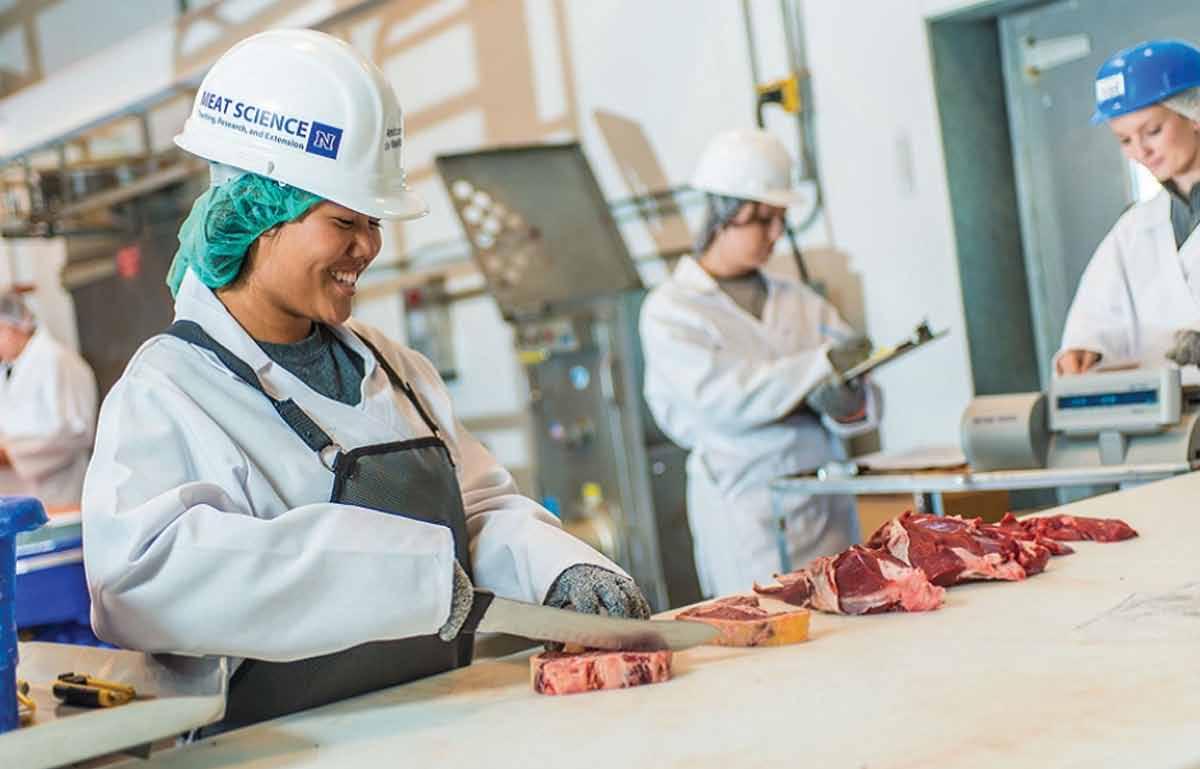
ment program.
“Students in high school will eventually be able to take classes in the program, and then apply those credits toward a college degree,” she said.
Program leaders are predicting 40 participants a year for the threeyear program, equaling 120 graduates by 2026. It is estimated that at least 40 percent of these graduates would work in a Nevada meat-processing plant.
These programs tie into the USDA’s National Institute of Food and Agriculture’s stated goal to build a pipeline of highly skilled meat-processing workers, while also supporting fair wages and safe workplaces.
According to the USDA’s press release on its overall programs for meat- and poultry-processing businesses, the efforts will “make investments to increase independent meat and poultry processing capacity, expand market opportunities for farmers, and support a growing workforce in rural areas.”
For more information on these training programs, Emm can be reached at 775-945-3444, ext. 1039.
Tyson and Gatik to deploy autonomous trucks ark. to optimize
SPRINGDALE, Ark. — Tyson Foods Inc. and Gatik AI Inc. have announced a multi-year collaboration to deploy autonomous refrigerated box trucks to bolster Tyson routes in Northwest Arkansas. Operating 18 hours a day, trucks will deliver Tyson®, Jimmy Dean® and BallPark® products, among others, to the company’s distribution and storage facilities in the Rogers and Springdale, Ark., areas.
The deployment will introduce Gatik trucks equipped with commercial-grade autonomous technology to the Tyson supply chain, operating on predetermined short-haul,
repeated routes to support fast and efficient product flow from plant to storage facilities. In a nationwide truck driver shortage, these autonomous trucks are an innovative and safe way to add resources that will allow the company to elevate drivers to other transportation positions in the Tyson business, while ensuring continuous supply chain reliability.
The collaboration will include multiple trucks with the potential for future expansion at other Tyson locations. The autonomous trucks are equipped with a 26-foot temperature-controlled box purposebuilt to transport refrigerated and frozen goods quickly and safely and multiple sensor modalities that are custom-designed for fail-safe short-haul B2B operations. A safety driver will initially be present in the cab to monitor the autonomous system and take command of operating the truck if required.

“At Tyson Foods, we are innovating and using automation throughout our business, including in transportation,” said Patrick Simmons, vice president of transportation for Tyson Foods. “This partner-

ship allows us to strategically place our drivers where they are needed most while still reliably and safely transporting protein from the plant to distribution centers.”
“We’re excited to partner with Tyson Foods to reduce cost and complexity within their regional distribution architecture,” said Gatik CEO and co-founder Gautam Narang. “This is a significant moment for Gatik as we introduce Class 7 autonomous box trucks into our fleet. Our partnership with Tyson is poised to drive long-term innovation and supply chain resiliency while delivering tangible, near-term value.”
The partnership is expected to provide Tyson Foods with increased asset utilization within its short-haul logistics network, assist with inventory objectives, and support a transition to a more responsive, high-frequency approach to goods movement, the companies said. Additionally, autonomous trucks operate with increased efficiency and sustainability, leading to reduced emissions and enhanced fuel economy.
(Continued on page 15)

applications being accepted for innovation in safety and health award
TUCKER, Ga. — The Joint Industry Safety and Health Council is currently accepting applications for the council’s Frank Cruice Innovation in Safety & Health Award. The program is open to National Chicken Council, National Turkey Federation and U.S. Poultry & Egg Association members and is intended for poultry and egg industry members that have made a significant advancement in operational excellence in a safety and/or health innovation.
Award applications can be entered in the industry categories of Poultry Processing (NAICS 311615), Poultry & Egg Production (NAICS 1123), Animal Feed Manufacturing (NAICS 311119), Animal Support Services (NAICS 115210) and Rendering (NAICS 311613).
An award will be issued for both a process-based innovation and an equipment-based innovation. A panel of judges will determine the award winner and honorable mention recipients for each category.
The innovation application criteria include the following:
• Must be an innovative or novel solution proven to reduce occupational injuries/ illnesses or improve safety awareness on or off the job.
• Must have demonstrated results over at least a six-month period and must be able to be leveraged across the industry.
• Preference will be given to innovations developed through safety committees or other grassroots efforts.
• Implementing an “Off the Shelf” program purchased or acquired from a third party will not be considered.
“The Joint Industry Safety and Health Council is excited to offer an award program that recognizes poultry and egg companies’ innovations in worker safety advancements,” said Adrienne Allison, senior director technical safety, regulatory & compliance for Tyson Foods, and chair of the Joint Industry Safety and Health Council.
The Joint Industry Safety and Health Council is made up of members from NCC, NTF and USPOULTRY. Collectively, the three organi-
zations represent 95 percent of the nation’s poultry products, and their members generate more than 1.3 million total U.S. jobs.
Award program rules, regulations and application forms are available at www.uspoultry.org/programs/ employee-safety/award-programs/.
The application deadline is Sept. 22. The award winners and honorable mention recipients will be announced during a ceremony at the International Production & Processing Expo (IPPE) on Jan. 30, 2024, in Atlanta, Ga.
$250 for the Summit.
The 2024 IPPE show dates are Jan. 30-Feb. 1, 2024, at the Georgia World Congress Center in Atlanta, Ga. More information on the 2024 IPPE can be found at www.ippexpo. org, and information about the Latin American Poultry Summit can be found at www.lacumbreavicolalatinoamericana.org.
cused on improving quality of life and building strong communities where Perdue associates live and work, and beyond.
avian influenza will be the theme for the 2024 latin american Poultry Summit

ATLANTA — Avian influenza will be the featured topic at the 2024 Latin American Poultry Summit. The theme, “A Look at Avian Influenza to Prevent Its Spread and Recover from the Damages It Caused,” will be explored through a robust program line-up featuring technical experts, key business leaders and university researchers from the Latin American poultry industry.
The Summit is presented by the International Poultry Expo, part of the International Production & Processing Expo, and the Latin American Poultry Association.
“Avian influenza has spread throughout the Central and South American region, creating additional urgency to protect the respective national industries,” said Paul Hill, West Liberty Foods, and chair of USPOULTRY’s International Committee, which helps organize the Summit. “Technical topics focused on the surveillance, prevention, management and eradication of avian influenza and additional diseases will be addressed at this year’s Summit.”
Registration for IPPE and the Latin American Poultry Summit will open on Oct. 16. Register early and receive the early bird discount rate of

SALISBURY, Md. — As part of its commitment to alleviate hunger in its communities, Perdue Farms has delivered an $80,000 grant and 11,000 pounds of nutritious chicken to support the Maryland Food Bank’s (MFB) hunger-relief programs on Maryland’s rural Eastern Shore.

Much of the funding through the Franklin P. and Arthur W. Perdue Foundation and chicken will support the food bank’s Mobile Market Program. The financial gift will also support MFB’s FoodWorks Culinary Training Program and its School Pantry program serving Wicomico County Public Schools.
The Perdue gifts are part of the company’s Delivering Hope To Our Neighbors® outreach fo -
The Mobile Market on the Shore, established in 2020 through gifts from the Perdue family and Perdue Foundation, offers a no-cost food shopping experience in communities where residents have limited access to grocery stores and affordable, healthy food. The Mobile Market also provides access to wraparound services that help put food-insecure Marylanders on the road toward self-sufficiency. The food bank currently has three Mobile Markets that travel across Maryland, with one dedicated to the Eastern Shore and two that serve counties in the northern, southern, and western regions of the state.
“We’re so grateful to have the support of the Perdue Foundation and Perdue Farms as we work to reach more hungry Marylanders through critical resources like our Mobile Market,” MFB President and CEO Carmen Del Guercio said. “Their generosity and partnership over the years have allowed us to serve more of our Eastern Shore neighbors, helping them overcome obstacles to accessing the fresh and nutritious foods that their families need to thrive.”
The FoodWorks Program offers a fresh start to low-income individuals with 12 weeks of intense culinary training. FoodWorks stu-
(Continued on next page)
dents learn a wide range of cooking fundamentals, food safety essentials, and other important skills employers seek in hiring a welltrained work force. Program participants also receive ServSafe® food safety certification and social services support from the FoodWorks case management team, as well as assistance landing jobs that set them down a path toward financial stability.
The School Pantry Program provides children and their families with a reliable source of healthy and fresh food. By setting up food pantries in neighborhood schools, the stigma of receiving food assistance in an unfamiliar setting is reduced, while the opportunity for community building is increased. The Maryland Food Bank – Eastern Shore Branch currently partners with 21 schools in Wicomico County to ensure children get the nutritious food needed to play, grow, and learn throughout the nine-month school year.
As Kim Nechay, executive director of the Perdue Foundation, explains, “We have a long and
strong partnership with the Maryland Food Bank and a shared purpose to help those struggling to put their next meal on the table. The Mobile Market, FoodWorks and school pantries are wonderful examples of Maryland Food Bank programming that is making a real difference in our hometown, the Eastern Shore, and across the state of Maryland.”
CWT appoints Daniels director of Canadian sales and hatchery operations
GAINESVILLE, Ga. — CWT Farms International Inc. announced the hire of Jay Daniels as its new director of Canadian sales and hatchery operations.
In his new role, Daniels will focus on CWT’s current customer base and expanding relationships with new and existing customers in Canada. He will also help develop operational efficiencies for CWT’s sales team.
“Jay brings a wealth of experience to our team, and we’re excited about his ideas to service and grow our customer base in the
Canadian market,” said Ricky M. Smith, president of CWT Farms International. “We will deliver the personalized service our poultry clients have come to expect while helping them maximize their production and profitability.”
Most recently, Daniels worked as a senior transportation specialist for a broiler breeding stock company. He brings 33 years of experience in management and supervisory roles in the poultry production industry, with broad experience in operations, production, planning, and logistics.

United States Cold Storage building automated site in ind.

Daniels attended the University of New Hampshire, earning an associate degree in business management, and Plymouth State University, earning a bachelor degree in marketing.
CAMDEN, N.J. — United States Cold Storage has broken ground this month for a 13.58-million-cubicfoot automated cold storage facility in the northwest Indiana town of Hebron, approximately 60 miles outside Chicago.
“This northwest Indiana location will offer much needed capacity to the Chicagoland area,” said David Butterfield, USCS senior vice president-central region. “Strategically, the Midwest has been — and is — a great market for USCS to align with
(Continued on page 18)
The QUALITY, DESIGN, WARRANTY and PRICE you have come to expect.


Overdrive 16 watt EH80 50K competes with

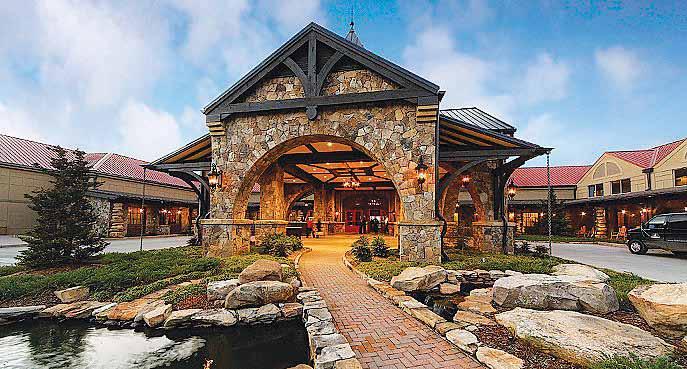

our current Coldshare Consolidation (CSC) distribution program.”
“Capacity within the industry is tight and adding this facility will provide much needed space for the growth of our current customers as well as Best-In-Cold service to new customers,” added Adam Ashley, USCS general manager in Lebanon, Ind. “Meanwhile, this site will be the fourth facility in Illinois and Indiana to participate in our nationwide CSC program. It will interact with our Lebanon location as well as Chicago-area warehouses in Minooka and Wilmington, Ill., to offer coordinated, less-than truckload distribution savings and reach to 48 states within the United States.”
Upon completion, the public warehouse will house 43,421 pallet positions including 35,645 positions serviced by an automated storage and retrieval system (AS/ RS). The building also will include a conventional room of 7,776 pallet positions with integrated, cascade layer pick technology. The facility will have convertible temperature controls but is expected to be fully frozen.
“This site will serve any frozen customer but is particularly suited to those with higher turning inventories who require broad distribution services,” Ashley said. “The intent with the design, layout, and automation is to have a building that can provide the service with minimal labor.”
USCS owns 110 acres at the Lowell site and will dedicate 70 acres to the building, associated trailer drop areas, dock and other needs. An additional 40-acre section provides room for a customer to build an adjacent production facility. In addition, USCS has land to
install a solar array that will provide 100 percent renewable energy to the warehouse.
USCS expects to complete the new building by May 2025.
“The State of Indiana and Lake County have been great to work with in support of our project,” Butterfield added. “Not only do they support our new Hebron, Ind., project but state officials also express continued interest in our USCS Lebanon, Ind., location. Through grants and other funding measures, Indiana continues to invest in infrastructure and improvements. This all helps to make it attractive for talented people to become part of the USCS Family. We appreciate the state’s “Business-friendly” climate and approach. It truly enables USCS to attract and provide a people first culture.”
USCS offers more than 411 million cubic feet of temperature-controlled warehouse and distribution space in 42 facilities located in 13 states.
ralco appoints Bader as president and CEo

MARSHALL, Minn. — Ralco Nutrition Inc. announced that Glenn Bader has been promoted to the role of president and CEO, replacing current president and CEO Brian Knochenmus, who will continue as owner and chairman of the board in addition to his duties as chairman of the board of The trū® Shrimp
Companies Inc.


Bader steps into this role with more than 20 years of leadership and general management experience, having spent 13 years with Ralco and 17 years prior at The Schwan Food Co.
“It’s a great honor to serve our employees and our customers in this new role,” Bader said. “Ralco has amazing people dedicated to providing livestock and crop producers with a better way to raise food to meet the ever-changing demands of today’s consumer. There is no greater purpose or more noble work, and I’m looking forward to leading the Ralco team as we continue to innovate and bring new solutions to an industry that faces constant challenges.”
“We are fortunate to have someone like Glenn to lead Ralco into its next phase of growth,” Knochenmus said. “Glenn has been a key leader in this company for many years and placing him in this role allows me to spend more time focusing on the launch of the first full-scale commercial shrimp production facility for The trū Shrimp Companies.”
Ralco is a privately held, thirdgeneration family business started in 1971. Bader is the first non-family member to lead the company.
“Our family is not stepping away from the company and has no plans to,” Knochenmus added. “Ralco has been a family business for over 50 years, and deserves a leader who values our employees, our customers, and our culture as much as we do; we believe Glenn is the right person to carry on the business with the same heart and commitment to its people and success.”
Ralco has also announced the hiring of two new poultry product specialists, Alea Belflowers and Micah Osburn. With extensive expertise and experience, Belflowers and Osburn are equipped to empower Ralco’s poultry producers for long-term success, the company noted.
Belflowers joins Ralco with a bachelor’s in animal science and a master’s in poultry science from North Carolina State University.
“I’m thrilled to be part of a company that’s so committed to not only providing the best possible products but also ensuring that our customers have all the support
they need,” Belflowers said. “My top priority is to be there for our customers – no matter how big or small – to answer any questions they have and help them get the most out of our products.”
Osburn received his bachelor’s and master’s degrees in poultry science from Texas A&M University.
“As the industry continues to transition away from antibiotics, it’s more important than ever to have scientifically proven natural alternatives that work,” Osburn said. “Ralco is at the forefront of developing and implementing these alternatives, and I’m excited to be part of a team that’s helping shape the future of agriculture.”
In their new positions, Belflowers and Osburn will assist poultry distributors, integrators and other producers by addressing any inquiries about Ralco products. Their main objective is to provide personalized assistance to customers and stay updated on industry trends, enabling Ralco customers to stay at the forefront of the poultry industry.
“We are excited to welcome Alea and Micah to Ralco,” Knochenmus said. “Their passion, expertise and commitment to service make them a perfect fit for our company and our customers. We look forward to working with them both as we continue to develop and provide industry-leading poultry solutions.”

Novus International has announced the upcoming retirement of Dr. Uwe Ranft from his role as managing director of Europe, the Middle East and Africa (EMEA) and global strategic accounts. Dr. Volker Seidl will succeed him, bringing 20 years of extensive experience to the role.
“Novus has been fortunate to have Uwe with us for the past 20 years, with 14 of those at the helm of the commercial business in EMEA,” said Ed Galo, Novus senior vice president & chief commercial officer. “Under his leadership, Novus has strengthened its
relationships with key accounts and grown its position as a leader in intelligent nutrition solutions throughout Europe, the Middle East, and Africa. We can’t thank him enough for his years of service and dedication to his customers and colleagues.”
Seidl joined Novus as the director of global strategic accounts in 2021. At the time, his extensive experience in the chemical and animal nutrition industries included head of sales excellence and head of global key account management at BASF Animal Nutrition.
In his new role, Seidl will help guide Novus’ commercial strategy within EMEA. In addition to his accountability for the global strategic accounts business, he’ll manage the EMEA sales and technical teams, leverage resources, and align corporate functions to support business growth and deliver value to customers.
During his tenure with the company, Seidl has proven himself ready for this new professional opportunity, Galo says.
“Volker has successfully led efforts to strengthen partnerships and grow business with global
strategic accounts,” Galo said. “He’s added value to the customer by developing and executing a unified framework to identify and manage strategic accounts at all levels of our organization. He is the ideal leader to continue this transformative work as the head of the commercial business in EMEA and with our global strategic accounts.”
The transition period will begin immediately and continue through Jan. 1, 2024, when Seidl’s appointment takes effect. On Jan. 1, Ranft will switch to a senior advisory role and continue to support the transition and the business through his retirement date, March 31, 2024.
residents, those attending school in Nebraska, or those interested in a poultry-based career in Nebraska are encouraged to apply for the 2024-2025 Nebraska Poultry Education Scholarship.
A total of eight $1,000 scholarships may be awarded for the 2024-2025 academic year. The eight scholarships are awarded based on college credit hours completed (0-26 Freshman, 27-52 Sophomore, 53-88 Junior, 89 or more Senior, Bachelors Degree as of June 2024 Post-Grad). Read and follow the instructions carefully prior to submitting your application. All winners will be notified no later than Feb. 8, 2024.
If awarded, the scholarship will be awarded directly to the educational institution. Applicants and winners are encouraged to apply each year and can be awarded the scholarship multiple times but not totaling more than $1,000 per academic year.
MILFORD, Neb. — Nebraska
Winners are required to attend the Nebraska Poultry Industries conference on March 7, 2024, in Omaha, Neb., to be presented the scholarship. Non-traditional students are encouraged to apply.

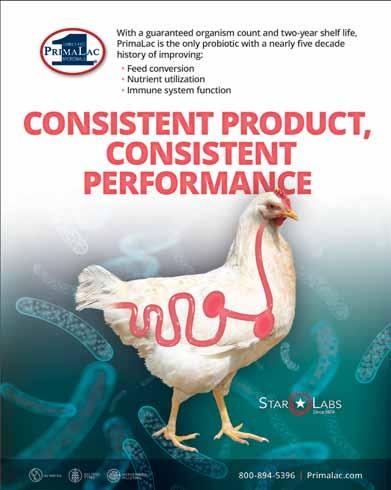
The application deadline is Dec. 15, 2023.
The application form can be accessed at https://form.jotform. com/232266604188156.

LINCOLN, Neb. — The Nebraska Department of Agriculture announces the winners in NDA’s annual Poultry Photo Contest. The contest was open to Nebraska 4-H and FFA members. The winning photographs are featured in a special 2024 digital calendar that includes biosecurity information poultry owners can use to protect their flocks from diseases.
“Keeping backyard flocks healthy is important to poultry owners and the poultry industry,” said NDA Director Sherry Vinton. “4-H and FFA members work hard to ensure that the animals in their care stay healthy and strong. The photos we received from this year’s poultry contest show healthy poultry living the good life in Nebraska.”
(Continued on page 21)

(Continued from page 19)


The students submitting winning photos for this year’s contest include: Kelsey Bunn, North Bend; Reagan Dinger, Roca; Sofie Farr, Farnam; Kaitlyn Flessner, Ord; Clara Krause, Hubbard; Charlie Meister, Springfield; Grant Meister, Springfield; Janae Oberg, Farnam; Jacob Rief, St. Paul; Charlotte Sanio, Lincoln; Kyla Wharton, Lincoln; and Ada White, Grand Island.
“I would like to thank the 4-H and FFA members who entered this year’s Poultry Photo contest,” Vinton said. “Through your photography, you are showing people in a unique and creative way just how diverse the poultry industry is in Nebraska. Congratulations!”
NDA’s 2024 digital calendar featuring the contest photographs and biosecurity information can be viewed and downloaded from NDA’s website at https://nda.ne-

braska.gov/animal/avian/index. html.
USDa announces new national institute of Food and agriculture director



WASHINGTON — The USDA has announced the appointment of Dr. Manjit K. Misra as the new director of the National Institute of Food and Agriculture (NIFA). The NIFA director leads the agency’s work in advancing agricultural research, education, and Extension to solve societal challenges.

“Dr. Misra is an esteemed scientist and educator whose devotion to studying and sharing his knowledge of seeds with the world will benefit society and inspire generations to come,” said U.S. Agriculture Secretary Tom Vilsack. “I am confident he will bring strong leadership and expertise to USDA as we continue our work to invest in and grow initiatives that ensure the long-term viability of agriculture and food systems.”
“We are excited to add Dr. Misra’s leadership and expertise to our team as we continue to transform our nation’s food and agricultural system,”
said Chavonda Jacobs-Young, USDA chief scientist and research, education, and economics under secretary. “NIFA, with its unique research, education, and Extension partnerships, and the current unprecedented investments we have toward building the next generation of ag professionals, is well positioned to address the complex challenges we face in agriculture.”
Prior to joining USDA, Misra served as a professor of agricultural and biosystems engineering at Iowa State University. For more than 30 years, he was director of the university’s Seed Science Center. The center has administered the National Seed Health System, authorized by USDA’s Animal and Plant Health Inspection Service, since 2001. Misra was also founding director of the Iowa State’s Biosafety Institute for
(Continued on next page)
Genetically Modified Agricultural Products.
In 2012, Misra was appointed chair of the USDA National Genetic Resources Advisory Council (NGRAC), a position he held until 2017. Misra has served on more than 60 local, national, and international boards and committees. These include the Steering Committee for the Food and Agriculture Organization’s (FAO) International Conference on Biotechnology, the Scientific Advisory Council of the American Seed Research Foundation, the Board of Directors of the Iowa Seed Association, the Iowa Crop Improvement Association, and the First the Seed Foundation.
Misra is the recipient of several awards for leadership, including the “Distinguished Service Award” from the American Seed Trade Association, the “Order of the Knoll Faculty Award” from Iowa State University, the “Global Agricultural Leadership Award” from the Indian Council of Food and Agriculture, the Sukup Global Food Security award, a certificate
of appreciation from the Secretary of Agriculture and the AE50 award from the American Society of Agricultural and Biological Engineers (ASABE).
Misra earned a bachelor of science in agricultural engineering in India, a master of science and a doctor of philosophy in agricultural engineering at the University of Missouri-Columbia. He is a researcher with 137 publications and an innovator with ten patents. During his tenure as the director of the Seed Science Center, the faculty and staff conducted seed programs in 79 countries, including 34 countries in Africa.
Johny wins
mPC’s outstanding Service award
ST. PAUL, Minn. — The Midwest Poultry Consortium has awarded Dr. Anup Kollanoor Johny, University of Minnesota, with its 2023 Outstanding Service Award. Johny was recognized at MPC’s recent Annual Meeting held in conjunction with the PEAK Convention.

MPC’s Outstanding Service


Award is given to individuals who exemplify outstanding service to the consortium and to the poultry industry as a whole. Johny was recognized for his invaluable dedication and commitment to MPC’s Center of Excellence Scholarship/Internship (COE) Program and played an important role in the planning and coordination of bringing the COE to the University of Minnesota.
“Not only does Dr. Johny serve as a COE instructor, but he’s also the Coordinating Council representative for the University of Minnesota,” said Beth Nelson, MPC president. “He was key to the success of COE’s debut at the University of Minnesota in 2022. He truly wants the COE program to shine at his university and he wants his university to shine for all the COE faculty members and students.”
In 2022, Johny served as an instructor in both the Poultry Products Technology and Poultry Enterprise Management classes at the COE and is the onsite coordinator in years in which the COE is located on the University of Minnesota campus. Johny earned his Ph.D. in animal science and served as a postdoctoral research associate at the University of Connecticut prior to arriving at the University of Minnesota where he currently serves as associate professor in the Department of Animal Science.
Johny joins previous MPC Outstanding Service Award winners: Sally Noll (’22); Elizabeth Bobeck (’21); Greg Fraley (’20); Mick Fulton (’19); Ken Koelkebeck (’18); Steve Jurek (’17); Mark Richards (’16); Michael Lilburn (’15); Dr. Dan Schaefer (’14); Patricia Hester (’13); Mark Cook (’12); Hongwei Xin (’11); Bernie Wentworth (’10); Lou Arrington (’09); Sen. Tom Harkin (’08); Wendy Wintersteen (’07); Dennis Casey (’06); Sue Lamont (’05); Ron Kean (’04); Bob Sparboe (’03); Congressman Tom Latham (’02).
For more information about the Midwest Poultry Consortium, visit http://mwpoultry.org/.

Pollo Campero
launches 3rd annual cup in support of St. Jude
DALLAS — Pollo Campero’s annual St. Jude cup fundraiser has returned for a third year in recognition of Childhood Cancer Awareness Month, conveying the restaurant’s ongoing support of St. Jude


Children’s Research Hospital’s mission: Finding cures. Saving children.
The collectible cup, featuring artwork by St. Jude patients, will be available at participating Pollo Campero restaurants through the end of November or while supplies last. For $5, guests can purchase a cup filled with their choice of fountain soda or agua fresca, and $3 will be donated to St. Jude Children’s Hospital.
“Our guests really embrace our St. Jude cup fundraiser each year, and we hope this will be the biggest year yet,” said Luis Javier Rodas, Pollo Campero managing director and COO. “We look forward to partnering with our guests to further the inspiring work of St. Jude.”
The St. Jude collectible cup continues Pollo Campero’s ongoing support of St. Jude Children’s Hospital’s lifesaving care. Pollo Campero has supported the St. Jude mission for six years and was named Emerging Partner of the Year in 2018, the company noted. This partnership has helped to raise $260,000 to date.
The Guatemalan-born fast ser-
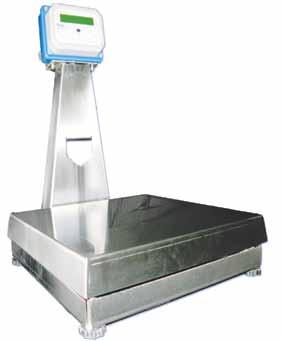


vice restaurant will also sponsor other St. Jude initiatives in September, including the 18th annual St. Jude Night of Hope/Noche de Esperanza Gala in Dallas on Sept. 9 and the St. Jude Walk/ Run later in the month. The gala, which kicks off Hispanic Heritage Month, celebrates the many ways the Hispanic community supports

St. Jude and its mission through an event featuring inspirational stories from St. Jude patients and supporters, the company added.
KFC Foundation has announced that it’s funding $1 million in community projects, making wishes come true for 100 nonprofit organizations nationwide. The KFC Foundation’s Kentucky Fried Wishes program supports communities by funding develop-
(Continued on next page)

ment projects on the wish lists of non-profit organizations.
“We’re so inspired by the work of these incredible non-profits and honored to help serve joy by positively impacting hundreds of communities across the country with this funding,” said Emma Horn, executive director of the KFC Foundation. “With our Kentucky Fried Wishes program in its third year, we’re proud to double last year’s donation amount and help fund more community projects than ever before.”
Since 2021, the KFC Foundation’s Kentucky Fried Wishes program has invested more than $1.6 million to support over 160 local non-profit organizations. This year’s grant recipients represent a mix of nominations by local KFC restaurant teams and non-profit self-nominations, spanning over 35 different states and supporting a variety of causes and communities, including:
• Anson County Partnership for Children, located in Wadesboro, N.C., works to make the county a better place for the youth by rais-
ing the quality of early care and education, supporting families, advancing child health and expanding literacy. Several local KFC restaurant employees have volunteered their time helping Anson County Partnership for Children with events and programming. The Kentucky Fried Wishes grant will help the organization purchase and stock a book vending machine for one year in the waiting room of the local health department.
• Girl Scouts of North East Ohio, located in Macedonia, Ohio, works to build courage, confidence and character in young girls. Local KFC Franchisee and previous Girl Scout, Sandra Rapp, serves on the GSNEO STEM Advisory and STEM Center Capital Campaign Committees and referred the organization to the Kentucky Fried Wishes program. The Kentucky Fried Wishes grant will help the

non-profit build an ADAaccessible StarLab Dome to provide STEM-oriented educational experiences to girls and boys across its 18-county GSNEO region.
• Peer 1 on 1, located in Cypress, Calif., creates a supportive and inclusive community that empowers youth and teens on the autism spectrum through personalized one-on-one interactions to enhance their social and communication skills. The local KFC generously offers meals to the children to support the organization’s activities and the store manager introduced the organization to the grant program. The Kentucky Fried Wishes grant will provide funding for the organization’s “quiet space,” a construction project that will create a stress-relieving environment, aiding in faster relaxation and increased focus and productivity.
• Runway to Hope, based in Orlando, Fla., provides di-
rect support and aid to families fighting pediatric cancer. Jessica Phillips, KFC Corporate Field People & Culture Business Partner, referred the non-profit to the Kentucky Fried Wishes program because her family was a recipient of the organization’s Family Assistance Program in 2018 and 2019. Runway to Hope provided Phillips’ family with direct emergency financial assistance during that time. The Kentucky Fried Wishes grant will help fund toiletry kits prepared for pediatric cancer families to make patients as comfortable as possible while receiving treatment. The KFC Foundation is an independent non-profit organization, led by a board including KFC Corp. employees and KFC franchisees. The KFC Foundation receives most of its financial support from at-register Round Up donations and purchases of KFC’s Secret Recipe Fries at participating locations.

Our new Fast Track Wall Vent (Patent Pending) takes the concept of a wall vent to the next level. It comes fully assembled right out of the box, goes up very quickly and is very competitively priced.
Wall Vent Features
Δ Available either insulated or uninsulated
Δ Superior performance
Δ Integrated track cord tensioner/locator

Δ Integrated winter latching system
Δ Cord guide included along with installation jig to speed up installation

Δ Available in 8”,10’, 12”, 14” heights with custom lengths available
Δ Perfect for retrofit applications-the wall vent is surface mounted to compensate for framing irregularities and can be ordered to fit virtually any opening

Δ Orders come bulk-packed in palletized gaylords to make it easier and faster on installation crews
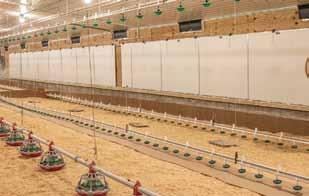

WASHINGTON — A series of online training modules is freely available to farmers, engineers, environmental consultants and others interested in designing on-farm systems to remove phosphorus from field runoff or subsurface drainage.
Available on the Internet at — https://fargo. nserl.purdue.edu/p-trap-training/ — the modules comprise seven narrated videos, starting with a basic overview of the need for phosphorus removal systems followed by how to design, build and install them, as well as how to properly dispose of or recycle the absorbent materials used to help capture the nutrient in drainage water and runoff.
“These videos explain the basics, and then get into all the details necessary for designing and constructing phosphorus removal structures,” said Chad Penn, a USDA Agricultural Research Service agricultural engineer who coordinated the modules’ development. “The goal is to disseminate this conservation practice throughout the country and world — helping producers strike an optimal balance between crop productivity and environmental stewardship.”
Phosphorus is a critical nutrient for optimal plant growth, health and yield, added Penn, with the ARS National Soil Erosion Research Laboratory in West Lafayette, Ind. However, phosphorus that leaves agricultural fields in runoff or drainage water can accumulate in bodies of surface water,
like rivers and lakes, compromising their quality and triggering the growth and decay of algal blooms that can imperil aquatic life and recreational activities.
Management practices and engineered systems that prevent phosphorus loss are vital to maintaining environmental quality.
However, deciding which system is best for a specific farm operation or crop field configuration can be challenging. Fortunately, the modules can help users navigate their way through the process, as well as provide “lessons learned” from the field, said Penn, who has conducted extensive field research on phosphorus removal systems.
The modules include lessons on using the PTrap (“Phosphorus Transport Reduction”), a software program that Penn and collaborators
developed to help users calculate specifications for building the structure based on the data that’s entered, including expected water-flow rates, annual volume, dissolved phosphorus concentration, drainage ditch depth and slope, pipe diameter and target removal goals.
Penn noted that regardless of design, phosphorus removal structures are intended for use on fields with a legacy, or long history, of phosphorus application in fertilizers or animal manures that has resulted in an accumulation of soil phosphorus to concentrations greater than crops need. The structures’ uses are not a replacement for nutrient management practices but rather a complement to them, he added.
In addition to creating the P-Trap software, Penn also designs, installs and field tests phosphorus removal systems in collaboration with Kevin King of ARS’s Soil Drainage Research Unit in Columbus, Ohio; Jay Martin of The Ohio State University, Jessica D’Ambrosio of the Nature Conservancy, Jeremy Freund of Outagamie County Conservation and Santina Wortman of the U.S. Environmental Protection Agency.
The team lent their technical expertise to the American Society of Agronomy and the American Society of Agricultural and Biological Engineers, which developed the training modules with support from USDA’s Natural Resources Conservation Service.

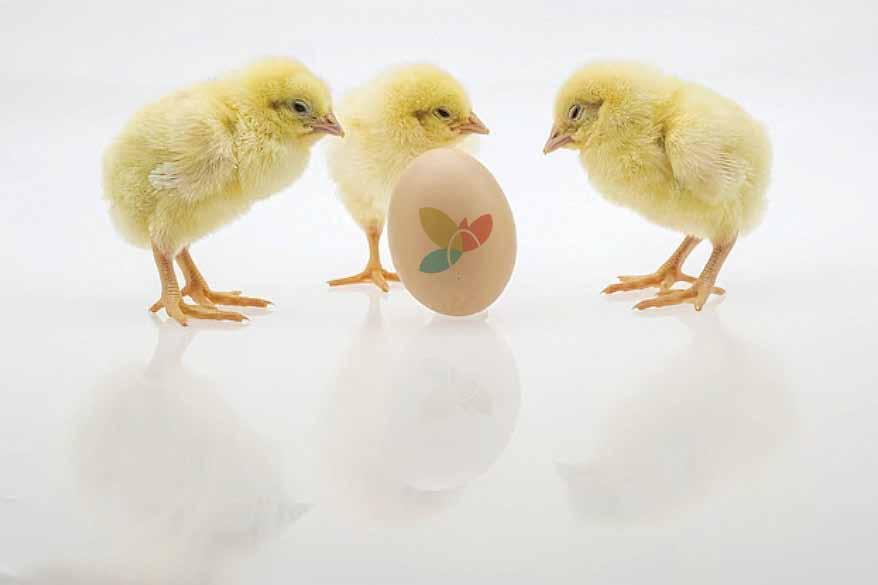


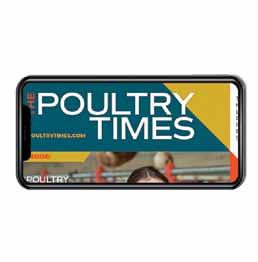

and 12 aircraft.
• The Florida Department of Law Enforcement had activated the State Emergency Operations Center Team to support ongoing operations. FDLE has prepared: 25 officers ready to deploy; one mobile command vehicle; one operations command center; and two mobile staging units.
• The Florida Fish and Wildlife Conservation Commission had readied high-water vehicles and all other storm response resources statewide so they may be rapidly deployed to assist Floridians in need in the event of damage or flooding.
• FWC Officers will respond with a variety of specialized equipment as necessary, including: shallow draft boats; larger platform vessels; ATVs; airboats and four-wheel drive vehicles.
• These assets are in addition to local FWC officers deployed to potentially affected areas.
FWC Special Operations Group teams will serve as reconnaissance units for the State EOC and report back on damage after the storm has made landfall. FWC Aviation Section has been placed on standby and has readied all appropriate aircraft for potential deployment for EOC aerial assistance, reconnaissance, and poststorm damage assessments when needed.
The Florida Highway Patrol had 300 troopers ready to deploy and prepared to implement 12-hour shifts.
At around 11:00 a.m. on Aug. 30 the storm was reduced to a category 1 hurricane with winds at 90 mph. Georgia Gov. Brian Kemp announced on the day before the storm that Georgia was under a state of emergency until Sept. 8, 2023.
“We are taking every precaution ahead of Hurricane Idalia’s landfall … and I am taking this additional executive action to ensure state assets are ready to respond,” Kemp said. “Georgians in the expected impact area can and should take necessary steps to ensure their safety and that of their families. We are well positioned to respond to whatever Idalia may bring.”
He also announced that the Georgia Emergency Management and Homeland Security Agency was to activate Storm Operations Center to keep a close eye on Hurricane Idalia.
“Thanks to our response partners on both the state and local levels, Georgia will be prepared for whatever Idalia will bring,” Kemp added. “Rest assured, though the system will likely weaken before crossing our border, we’re not taking anything for granted. As the week progresses, I will work closely with GEMA/HS, the weather service, public safety organizations, and others to ensure we leave nothing to chance.”
By the time Idalia had reached North Carolina and South Carolina it had been reduced to a tropical storm.
Clemson News said the government of South Carolina momentarily waived conditions for farms and domestic pets that are being evacuated from hurricane bound Florida. Florida veterinarians approached South Carolina officials about the evacuation precautions taken
to move animals. Michael Neault, South Carolina state veterinarian, and director of Clemson Livestock-Poultry Health said, “in order to accommodate evacuations in advance of Idalia, we are temporarily suspending some of the requirements governing the importation of agricultural and companion animals into South Carolina as we have done with past storms.”
State departments of agriculture are still assessing the storm’s damage, but some have issued preliminary numbers.
In regard to poultry, the Georgia Department of Agriculture is reporting power outages at several locations and multiple poultry operations in Coffee County were on generators. Two poultry operations reported roof damage and flooding was noted in two poultry houses. There was also other agricultural damage such as downed pecan trees throughout the impact area; some pecan crop loss in the area; some corn field damage; as well as several barns, sheds and other buildings that were torn down.
“Since (Aug. 28), we’ve been onsite at the State Operations Center monitoring Hurricane Idalia, and our team and I are on the ground in South Georgia assessing the damage and speaking directly with impacted farmers, producers, and business owners,” said Tyler Harper, Georgia agriculture commissioner. “We are working overtime, in coordination with our State and Federal partners, to ensure farmers, producers and other GDA licensed operations impacted by Idalia have the resources they need to recover and bounce back stronger than before.”
The Florida Department of Agriculture is still assessing damage and urges the state’s agricultural producers to document their damage and/ or crop loss with photos before beginning the clean-up process.
During hurricane season, USDA has issued preparation tips in the event of a storm. They note:
• During a power outage, the refrigerator will keep food at a safe temperature (below 40 degrees F) for up to 4 hours. A full freezer will hold a safe temperature for approximately 48 hours (24 hours if it is half full). Keep refrigerator and freezer doors closed to prevent cold air from escaping.
• Keep an appliance thermometer in both the refrigerator and freezer in the event you do need to check the refrigerator or freezer temperatures.
• Freeze water in small plastic storage bags or containers prior to a storm. These containers are small enough to fit around the food in the refrigerator and freezer to help keep food cold.
• Freeze refrigerated items, such as leftovers, milk and fresh meat and poultry that you may not need immediately—this helps keep them at a safe temperature longer.

• Consider getting 50 pounds of dry or block ice if a lengthy power outage is possible. This amount of ice should keep a fully stocked 18-cubic-feet freezer cold for two days.
• Group foods together in the freezer — this ‘igloo’ effect helps the food stay cold longer.
• Keep a few days’ worth of ready-to-eat foods that do not require cooking or cooling.
• For livestock producers USDA urged to not only prepare for themselves but prepare for their livestock.
• Plan for evacuation – know how you will evacuate and where you will go. If it is not feasible to evacuate your livestock, be sure to provide a strong shelter, and adequate food and water that will last them until you can return.
• If you are planning to move livestock out of state, make sure to contact the State Veterinarian’s Office in the receiving state before you move any animals. You also may contact APHIS Veterinary Services state offices for information and assistance about protecting and moving livestock.
• Listen to emergency officials and evacuate if asked to do so.
The Florida Department of Agriculture also issued the following for those impacted by Idalia:
For producers that experience losses and/or damages due to Hurricane Idalia, please share the following information to report to the Farm Service Agency: For Hurricane Idalia assistance, please call the FSA Producer Hotline: 877-508-8364 M-F 8 a.m.-8 p.m. or send an email to the FSA disaster group inbox at FPAC. FSA.FLFSA.Disaster@USDA.GOV Indicate the county of loss in the subject line — emails sent to the disaster group inbox will receive an auto-reply acknowledging receipt.
“Georgians in the expected impact area can and should take necessary steps to ensure their safety and that of their families. we are well positioned to respond to whatever idalia may bring.”
WASHINGTON — Winter rye is prized for its versatility. It is a source of grain and also a forage and ground cover that protects the soil from erosion by wind and rain. But the benefits of winter rye don’t stop there.
A series of studies, begun in 2015, by a team of USDA Agricultural Research Service and university collaborators suggest that establishing a cover crop of winter rye between rotations of corn and soybean can reduce nitrate losses, sequester carbon, and provide a source of renewable natural gas.
Robert Malone, an agricultural engineer with the ARS National Laboratory for Agriculture and the Environment in Ames, Iowa, is coordinating the studies to evaluate rye’s potential role in the “sustainable intensification of agriculture” — an approach deemed critical to meeting growing world demand for food, feed, fiber, and fuel without overtaxing what the land and natural resources can provide.
In the latest studies, the team used a field-scale computer model to simulate rotations of corn and soybean, with or without winter rye cover crops, at 40 sites across the North Central United States, including parts of the Mississippi River Basin, which empties into the Gulf of Mexico.
Among results recently published in the journal of Environmental Research Letters:
• Establishing a winter rye cover crop between cornsoybean rotations in tiledrained fields (meaning, those using a system of underground drainage pipes to remove excess water) reduced nitrate levels in drainage water by more than 45 percent compared to ryefree fields — or about 21 and 44 kilograms per hectare, respectively.
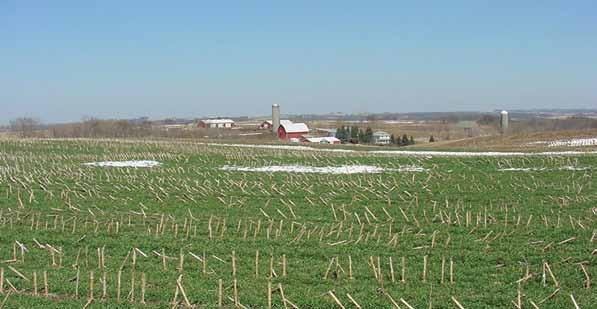
• Across the 63-total million
hectares (approximately 156 million acres) of North Central farmland that the model’s simulations encompassed, use of a winter rye cover crops on tile-drained fields translated to a 27 percent reduction in nitrate loads entering the Gulf of Mexico via the Mississippi River basin.
Nitrate poses an environmental concern when it goes unused by crop plants and escapes into streams, river, lakes and other bodies of surface water, compromising water quality and helping fuel algal blooms. The subsequent death and decay of the algae in these blooms consumes oxygen, killing or driving off fish and other aquatic life.
In coastal waters like the Gulf of Mexico, this condition is known as hypoxia, and it creates a “dead zone” spanning several thousand square miles, a size that can exact a costly toll on commercial fisheries and other associated industries. This summer, for example, the Gulf’s dead zone is forecasted to cover 4,155 square miles.
“A variety of factors — including the effects of excess nutrients and water-body stratification (layering) due to saline or temperature gradients — can create hypoxic conditions. In North America, the size of the hypoxic area in the Gulf of Mexico correlates strongly with
spring nitrate-nitrogen loads from the Mississippi River,” explained Malone, who collaborates on the modelling studies with 15 other researchers from three ARS laboratories and four universities.
Climate change may increase the likelihood of hypoxic conditions in the Gulf of Mexico, lending urgency to U.S. Environmental Protection Agency task force efforts to reduce nitrogen and phosphorous loads from the Mississippi River basin by 45 percent by 2035.
“The use of cover crops such as winter rye in corn-soybean rotations in the North Central U.S. is one of the most promising conservation strategies for reducing nitrate loads to streams and rivers that discharge into the Mississippi River,” according to Malone.
In addition to curbing nitrate losses, winter rye cover crops may also have a role to play in capturing (or, “sequestering”) carbon.
According to the model’s simulations, establishing winter rye cover crops in corn-soybean rotations across the North Central U.S. could produce more than 18 million metric tonnes (19.8 million tons) of field residue, called “biomass.” That rye residue, in turn, has potential to yield 210 million megajoules of energy annually — the equivalent energy content of 2.3 billion gallons of ethanol — were it to be converted into bio-methane gas us-
ing anaerobic digesters.
The simulations also indicate that in the bio-methane production process, a standard filtration step called “upgrading” could enable the removal and capture 7.5 million tonnes (8.3 million tons) annually of carbon dioxide, preventing its release back into the atmosphere when the biogas is burned for power or heat and creating a carbon sequestration benefit for farmers.
The researchers don’t view winter rye cover crops as a proverbial “magic bullet” for managing nitrogen and improving the environment, however. Rather, it’s likely to be integrated with other measures, including the use of saturated riparian buffers, controlled drainage, wetlands and bioreactors.
“Combined conservation practices such as winter rye cover crops and edge-of-field practices like using the saturated buffers are sometimes called ‘stacked practices,’ and they may reduce nitrogen loss more than when each practice is used individually,” Malone said.
Along with colleagues in Ames, Malone co-authored the Environmental Research Letters paper together with scientists from the ARS Soil and Water Management Research Unit, the ARS Arid-Land Agricultural Research Center, Pennsylvania State University, Iowa State University, McGill University and Purdue University.
— With a push to the future for farmers to grow renewable energy plants, limited water is a challenge. A Texas A&M University AgriLife-led team is addressing that issue by evaluating biobased feedstock cropping systems with both water and carbon resiliency.
The Texas A&M AgriLife Research study will use a combination of feedstock germplasm and field production studies to develop a predictive system to identify the best-performing crops and cropping system for renewable energy and biobased products while maximizing carbon capture and retention in the soil. The study is focused on providing solutions for a sustainable bioeconomy.
“It all links back to climate change and increased carbon emissions,” said Dr. Mahendra Bhandari, a remote-sensing crop physiologist and assistant professor at the Texas A&M AgriLife Research and Extension Center in Corpus Christi. “We are looking for better products and systems that will minimize the use of fertilizers and other inputs to eventually benefit environmental sustainability.”
The USDA National Institute of Food and Agriculture-funded study titled Bioproducts and Bioenergy from Warm-Season Perennial Grass Feedstock for Low-Input Conditions with Positive Water and Carbon Footprint, includes Bhandari, Dr. Jamie Foster, AgriLife Research professor of forage agronomy, Beeville; and Jorge Da Silva, AgriLife Research professor and sugarcane breeder, Weslaco, all within the Department of Soil and Crop Sciences in the Texas A&M College of Agriculture and Life Sciences; and Dr. Hua Li, professor and industrial engineering graduate coordinator, Texas A&M University-Kingsville.
The project will screen energy cane, switchgrass and perennial sorghum genotypes for water- and

nutrient-use efficiency. The most efficient entries will then be integrated with legume crops to create a cropping system.
The team will concentrate on southern growing regions in Texas and began planting in August on Texas A&M AgriLife properties near Corpus Christi and Weslaco. Da Silva has a long history of breeding energy canes and has developed some of the energy cane cultivars. He will be evaluating the performance of those cultivars with respect to drought tolerance.
Sugarcane has one of the highest photosynthesis capacities of all plant species on the planet, Da Silva said. Energy cane is a sugarcane-derived crop freed of accumulating sucrose on its stems, so it uses its photosynthesis ability to accumulate fiber instead, resulting in high biomass. It also shows resistance to different stresses, which results in a low-input crop appropriate for this project.
Among the material being tested on the project are breeding lines recently created at Da Silva’s project funded by the Texas Governor’s Office Emerging Technology Fund — Biomass.
Bhandari will lead the development of a remote-sensing phenotyping system to assess drought tolerance in feedstock crops. The traditional method of evaluating drought tolerance is labor intensive, he said, but remote-sensing tools can efficiently gather that information and discover traits important to assessing drought tolerance in different genotypes.
The study intends to use RGB, multi-spectral, thermal and LiDAR sensors that will be mounted in unoccupied aerial vehicles, UAVs.
“We are going to utilize the unoccupied aerial system and develop high-throughput phenotyping to evaluate the performance of the germplasm of energy canes and forage sorghums,” Bhandari said. In addition, the team will also utilize UAV-based measurements and machine learning approach to develop biomass yield prediction models of
these crops.
The next step will be integrating bioenergy crops with legumes to help develop a climate-smart cropping system. When legumes are included in cropping systems, the demand for inorganic nitrogen fertilizer may be less, and increased soil cover may improve water infiltration and storage in the soil.
Foster will lead the team in measuring the monoculture feedstock biomass system’s environmental impacts and comparing it with the legume-integrated biomass system. Li will complete a lifecycle analysis of this production system to consider the economics of producing the crops as well as the environmental benefits of the positive carbon and water footprint.
Another goal is to train undergraduate and graduate students to work in the bioenergy industry.
“We are collaborating with Dr. Li at Texas A&M University – Kingsville to develop training modules
for the students to work on this project,” Bhandari said. “In this way, we are building the next generation of workforce for integrated cropping systems.
“We are looking at both the environmental perspective as well as the economic sustainability,” he said.
Bhandari added that the team’s overall goal is to develop an alternative crop production system with a positive water and carbon footprint that is more resilient to future climatic events.
“It is not just evaluating or finding one or two drought-tolerant varieties,” Bhandari said. “The bigger picture is finding varieties that are drought tolerant as well as a cropping system that has a leguminous component in it to supply the fertilizer for the production system, thus, hopefully providing a holistic approach.”
(Sept. 12): New York prices were down 5 cents for larger sizes and unchanged for Medium. Regional and California prices were steady. The undertone was steady to weak. The national shell egg inventory was 4 percent higher when compared to the previous week. Demand was light to moderate. Offerings were moderate to at times heavy. Supplies were light to moderate. Market activity was moderate to slow. Breaking stock supplies were light to moderate; breaking schedules were full-time to reduced. The national breaking stock inventory was up 0.1 percent from the previous week. Spent fowl offerings were fully sufficient for the mostly light and generally unaggressive demand, the USDA Agricultural Marketing Service reports.
Shell egg demand indicator (Sept. 6): Consumer demand for shell eggs was about unchanged for the week of Sept. 6 week as the focus was on outdoor activities for the previous Labor Day weekend. Wholesale prices for cartoned eggs were mostly steady with light to moderate supplies and offerings and moderate to good interest. Prices on the loose egg market were weak on light to moderate supplies and offerings and mixed demand. Trading was slow to moderate. Wholesale breaking stock prices were steady with light to moderate demand, light offerings, and light to moderate supplies. Schedules vary and trading was slow to moderate. The preliminary survey of retail outlets indicated an increasing pace of featuring with a slight increase in the average ad price.

Broiler: Estimated slaughter for week ending Sept. 9 was 143,557,000.
Actual slaughter for the week ending Sept. 2 was 158,256,000.
Heavy-type hen: Estimated slaughter for the week ending Sept. 9 was 1,568,000.
Actual slaughter for the week ending Sept. 2 was 1,819,000.
Light-type hen: Estimated slaughter for the week ending Sept. 9 was 441,000. Actual slaughter for the week ending Sept. 2 was 788,000.
Total: Sept. 9: 145,566,000; Sept. 2: 160,863,000.
Negotiated prices in trucklot and less-than-trucklot quantities of ready-to-cook whole body broiler/fryers delivere d to first receivers; prices in cents per pound

At Neogen®, we believe today’s global poultry producers find value in being stewards of the environment. And we wanted to help!

Introducing the New EVO Line of Phosphate-Free Detergents: products that provide maximum cleaning while producing minimal environmental impact.

• CHLOR-A-FOAM™ EVO: High foaming, chlorinated detergent for cleaning prior to disinfecting

• ACID-A-FOAM™ EVO: A rotational product, ideal for removing scale build-up from fan blades, trays, buggies, and other hatchery equipment
• CHLORINATED TRAY WASH EVO: Non-foaming, chlorinated tray wash liquid
• ACID TRAY WASH EVO: Non-foaming, acid-based tray wash liquid to descale spray nozzles and heating coils in tray wash machines
• FARM-FOAM EVO: High foaming, non-chlorinated detergent for cleaning prior to disinfecting
